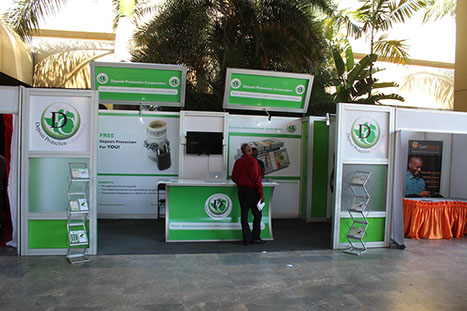In the Monetary Policy Statement released by the Reserve Bank of Zimbabwe yesterday, it was revealed that the Deposit Protection Corporation (DPC) now covers foreign currency denominated accounts. This deposit protection scheme was implemented with effect from the 1st of January 2022 and so you should feel safe to deposit your hard currency.
The FCA maximum cover level is US$1,000.00 (one thousand United States dollars) per deposit class per each banking institution and US$500.00 (five hundred United States dollars) per deposit class per deposit-taking microfinance institution with effect from 1 January 2022.
From Monetary Policy Statement
This is in addition to the protection scheme for Zimdollar accounts where up to ZWL$10,000 is covered by the DPC.
For those with balances over US$1000 or ZWL$10,000, they will have to wait for the liquidation process to see how much of their deposits they can get back. This takes years in most cases and all the while, in the Zimdollar’s case, the value would be tumbling.
Why the need for deposit protection?
The logic of a deposit protection scheme is rock solid. All deposit taking institutions, including banks, contribute to a fund that will be used to cover depositors should one of the deposit taking institutions go belly up. That way, the most important player in the financial system, the depositor, can at least be guaranteed that some of their balances will be recovered.
To further sweeten the deal, the depositor does not contribute to this fund. It is the banks and their colleagues who contribute but you can bet that their fee structures will take this mandatory contribution into account.
Currently the prescribed annual premium rate is 0.3% of average eligible deposits which premium is paid on a quarterly basis.
DPC
Where was the DPC when we lost everything?
In Zimbabwe, the Deposit Protection Corporation was established in 2003. Yes, the DPC was already in place when banks tumbled all over the country in the hyperinflation era and years after. So, how come many people lost everything?
The main reason will be that the hyperinflation rate rose too high and the old Zim dollar was obliterated to such an extent that no contributions to a scheme could have ever kept up. Same goes for any fund/saving done in a hyperinflationary environment. That money will lose value faster than you can collect it or reinvest it.
The DPC had its critics and with it having been established by the govt, that is hardly surprising. The RBZ was also criticised for responding slowly when bank executives misbehaved.
Whatever the combination of reasons, Zimbabweans have not been satisfied with the recovery of their deposits when finance institutions go under.
Interfin Bank was closed on the 11th of June 2012 and yet the DPC says payments are still in progress. Ten years later, payments to depositors have not been finalised and that’s ridiculous. The payout processes are undertaken with the speed of a sloth and the claims procedure is a little annoying, although somewhat necessary.
Under normal circumstances, once a duly completed and certified claim form has been submitted together with supporting documents (copy national ID, valid passport or valid driver’s licence), a depositor is reimbursed within 4 working days from date of submission of a duly completed claim form.
DPC
Certified claim? Really?
The US$1000 won’t allay people’s fears
It is a good move that we can rest easy knowing that the first US$1000 would be recoverable within four working days after filling out a form. In all honesty, the majority of us Zimbabweans do not even have a thousand bucks to deposit and so our life savings would be covered by the DPC, even before liquidation.
Even so, I wouldn’t be the only one surprised to death if I saw ordinary Zimbos depositing USDs for safekeeping with the banks. The National Mattress Bank just won’t be beat anytime soon.
Even the Reserve Bank of Zimbabwe governor knows that Zimbos are still reeling from the bank closures that his predecessor oversaw and are not in the least bit interested in the formal banking system.
If there was enough Zimdollar cash to go around, most would prefer withdrawing their funds and risking robberies just so they could hold and spend their money as they saw fit. This is not helped by the high bank charges that the RBZ has ignored all these years. Zimbabwe is a mostly non-cash economy, as regards the Zimdollar, simply because there is no cash to talk about. Only 0.49% of the money in circulation is hard cash.
So, no, I don’t think the new FCA cover will mean much to most people.
If somehow they put something in the water that made us all forget Zim’s recent history then this announcement would move a few ordinary people. For the businesses that have no choice but to bank their millions of USD, this protection scheme is a non-event. So, in the end, who is this announcement for?-techzim

